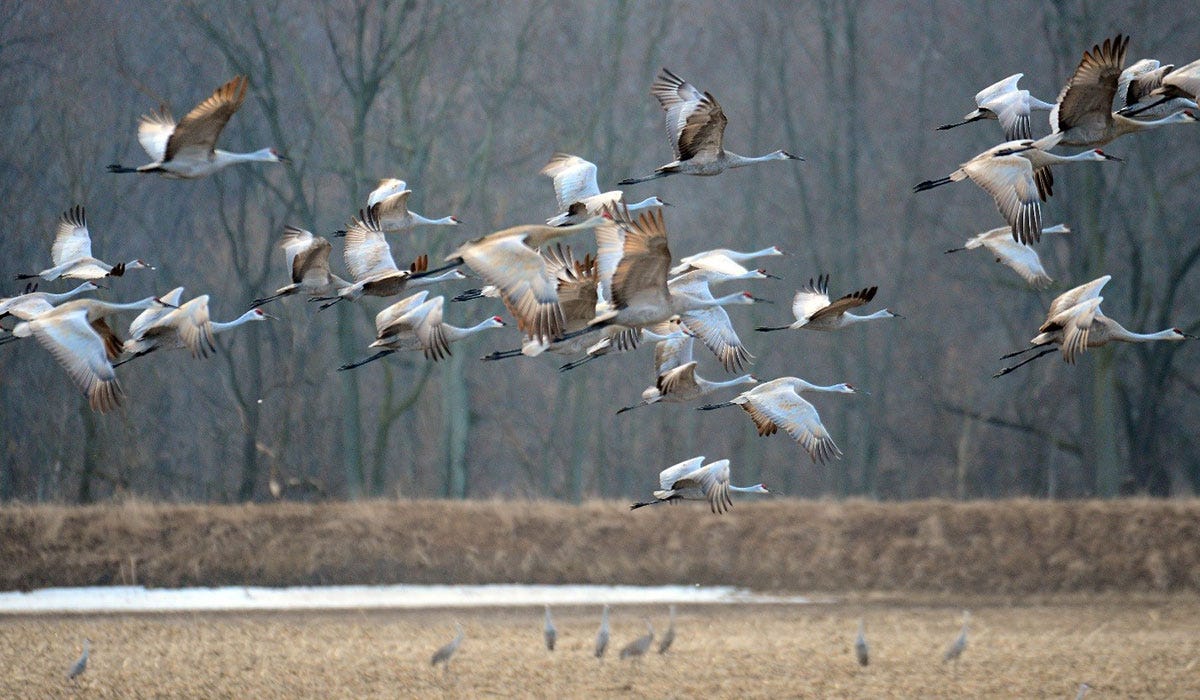
Hmmm… let’s see. Should you:
Spend next Friday combing through endless sites to score 70% off on more stuff?
Or, see the most spectacular annual wildlife migration available within a short drive from Chicago?
It’s a no-brainer, right?
Mass animal migrations are not just the stuff of Nature Channel specials; you can witness one practically in your own back yard (though I can’t promise you the charming David Attenborough narration 😕).
Every year, thousands and thousands of migrating sandhill cranes descend on a field in the middle of nowhere in rural Indiana, as they get ready for their annual trek to warmer climes. The spectacle is indescribable, and absolutely free to anyone willing to brave the frigid November winds on a wide open field at sunset.
Large flocks of sandhill cranes arrive at Jasper-Pulaski Fish & Wildlife Area from mid-October through mid-December. Indiana DNR maintains a weekly count of the birds, whose numbers typically swell dramatically, tripling or quadrupling in the final week of November.
This makes Thanksgiving weekend an ideal time to skip the shopping mall, and head out on a bird-viewing expedition.
I guarantee that you will never see (or hear) anything quite like thousands of migrating cranes, each as tall as a middle-schooler (though considerably lighter), all gathered in one place as if to attend a festival of some sort.
As with many animals, the prime viewing times are sunrise and sunset, the latter being more practical if you’re traveling from the Chicago area.
About an hour before dusk, flock after flock of cranes descend into the refuge near the observation area. Watching as groups of birds sweep in from all directionsto join the party on the ground is a breathtaking sight.
The birds chatter in their otherworldly chirps, socialize, spar and perform various displays before returning to roosting marshes at nightfall.
The Jasper Pulaski Refuge features a large platform with excellent views of the Sandhill Crane Observation Area, and this is the ideal place to watch the crane spectacle in its full glory. The roosting marshes in the Waterfowl Resting Area are not open to the public, so that migrating birds can rest without human disturbance.
Occasionally the birds may gather close to the observation platform, but generally they are a few hundred yards away. Stationary viewing scopes are available on site, but I definitely recommend bringing your own spotting scope or binoculars. If you’re planning on getting some good closeups, bring your most powerful zoom lens, so that you can capture images without getting too close.
This is a highly recommended and definitely family-friendly outing. Bring warm clothes, blankets, and a thermos of hot chocolate, and prepare to be blown away.
I may just see you there! —Justyna




